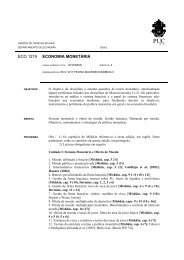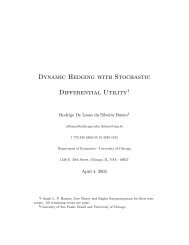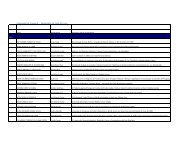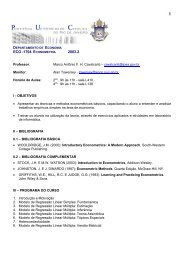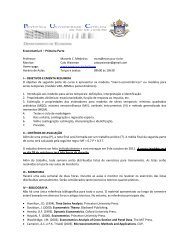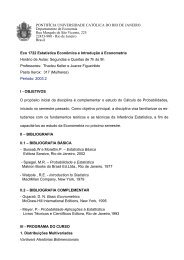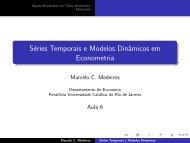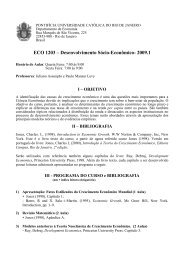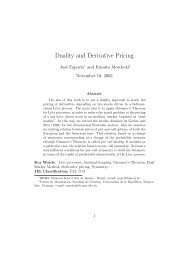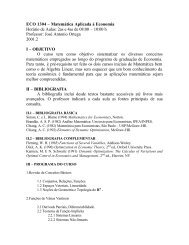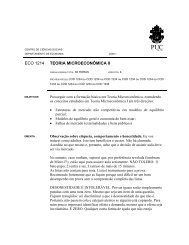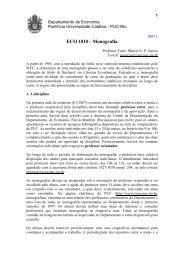Smooth Transitions, Neural Networks, and Linear Models - CiteSeerX
Smooth Transitions, Neural Networks, and Linear Models - CiteSeerX
Smooth Transitions, Neural Networks, and Linear Models - CiteSeerX
You also want an ePaper? Increase the reach of your titles
YUMPU automatically turns print PDFs into web optimized ePapers that Google loves.
<strong>and</strong> compute the value of the AIC. Repeat this procedure by omitting each variable in turn. Continue bysimultaneously omitting two regressors of the original model <strong>and</strong> proceed in that way until the polynomialexpansion becomes a function of a single regressor. Choose the combination of variables that yieldsthe lowest value of the AIC. The selected variables will compose the vector Þ Ø .2.2.1.2 Testing <strong>Linear</strong>ity. In practical nonlinear time series modelling, testing linearity plays an importantrole. In the context of model (4), testing linearity has two objectives. The first one is to verify ifa linear model is able to adequately describe the data generating process. The second one refers to thevariable selection problem. The linearity test is used to determine the elements of Ü Ø . After selecting theelements of Þ Ø with the procedure described above, we choose the elements of Ü Ø by running the linearitytest described below setting Ü Ø equal to each possible subset of the elements of Þ Ø <strong>and</strong> choosing the onethat minimize the Ô-value of the test.In order to test for linearity, equation (4) is rewritten asÝ Ø « ¼ Þ Ø ·½ ¼ Þ Ø ´ ´ ¼ Ü Ø µµ · Ø (6)where , , <strong>and</strong> ¬ , ½. The transition function ´ ´ ¼ Ü Ø µµis redefined as ´ ´ ¼ Ü Ø µµ ½½·exp´ ´ ¼ Ü Ø µµ½¾ (7)Subtracting one-half from the logistic function is useful just in deriving linearity tests where it simplifiesnotation but not affect the argument. The models estimated in this paper do not contain that term.Consider (6) with (7) <strong>and</strong> the testing of the hypothesis that Ý Ø is a linear process. Note that ´¼µ ¼,implying the null hypothesis of linearityH ¼ ¼ ½ (8)Hypothesis (8) offers a convenient starting point for studying the linearity problem in the LM (score)testing framework.Note that model (6) is not identified under the null. A consequence of this complication is that6



